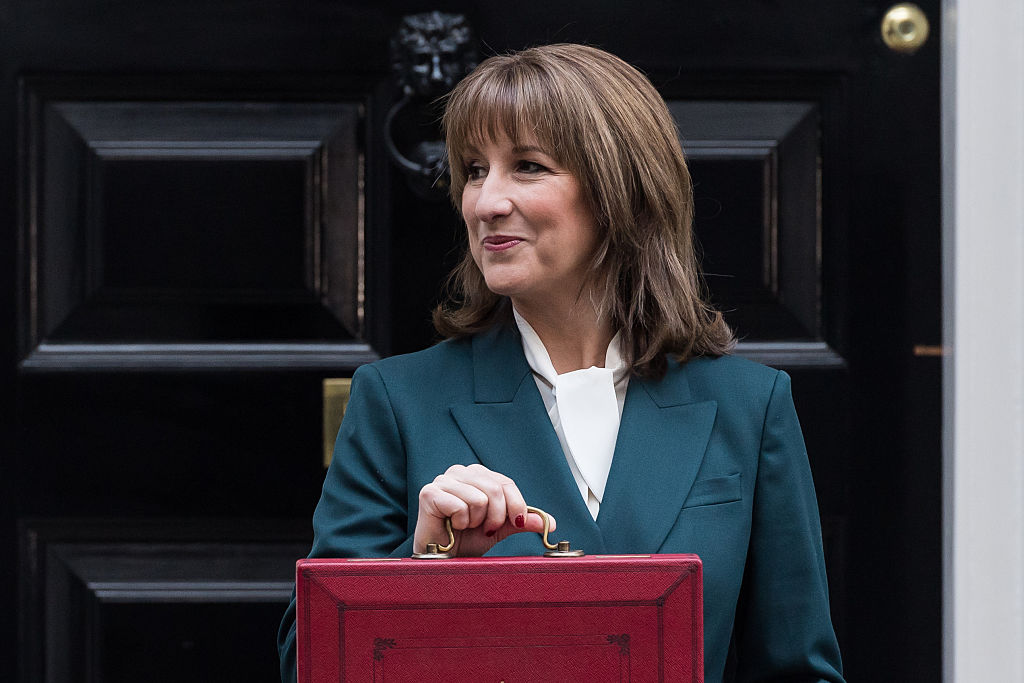Why higher interest rates don’t always mean tighter monetary policy
The US Federal Reserve may have raised interest rates, but that doesn’t mean central bankers are tightening monetary policy, says John Stepek. What matters is “real” interest rates.


As everyone expected, the new US Federal Reserve chairman, Jerome Powell, delivered an interest rate rise yesterday.
The target range for the federal funds rate (the US equivalent of the Bank of England's key rate) now sits at 1.5% to 1.75%, a rise of 0.25 percentage points.
So rates are continuing their steady march higher.
MoneyWeek
Subscribe to MoneyWeek today and get your first six magazine issues absolutely FREE

Sign up to Money Morning
Don't miss the latest investment and personal finances news, market analysis, plus money-saving tips with our free twice-daily newsletter
Don't miss the latest investment and personal finances news, market analysis, plus money-saving tips with our free twice-daily newsletter
This means that monetary policy is getting tighter, doesn't it?
Well, it's not quite that simple.
Why "real" interest rates are what matters
Markets and individuals have grown used to extremely forgiving monetary policy. The idea that interest rates are now rising understandably fills them with concern.
However, rising interest rates don't always correspond to tighter monetary policy. The key thing to understand is that what really matters is "real" interest rates. In other words, interest rates adjusted for inflation.
We all know that £100 today is in the normal course of things worth more than £100 this time next year (that's partly because we live in a country that is relatively prone to inflation. If you had lived in Japan for the last 30 years, there have been occasions when £100 would in fact be worth more tomorrow than today. But I digress.)
Sometimes, £100 today can be worth more than £105 next year. Or maybe even £110. It all depends on how rapidly prices are rising.
Because we're only human, it's hard not to focus on nominal prices. We know that £110 looks bigger than £100. We have to think that little bit harder to remind ourselves that £110 in 2020 might be smaller than £100 in 2018. And we do hate to think when it's not strictly necessary.
So you have to bear all of this in mind when you're looking at interest rates. Interest rates are currently rising in nominal terms. But it's what happens in "real" terms that makes all the difference.
Here's an easy example to illustrate. You have your £100. You can put it in the bank, or spend it today on £100 of non-essential goods. The bank is paying you 1% a year interest. That looks poor. You'll have £101 this time next year.
But let's say inflation is negative in other words, we're in deflation. The £100-worth of goods you want to buy will only cost £98 in a year's time. So if you buy today, you have your goods and you have £0. If you buy a year from now, you have your goods and you still have £3.
So in real terms, you've done well out of this deal, even although interest rates are very low.
Here's another scenario. This time, the bank will pay you 5% on your £100. So in a year's time, you'll have £105 if you put it in the bank. That sounds much better than before.
But inflation is now rising quite sharply. The £100 of non-essential goods you are thinking of buying is going to cost £110 in a year from now. So if you buy today, you have your goods and you have £0.
But if you want to buy a year from now, your £100 will have grown to £105, but you'll need to find an extra £5 somewhere if you still want to buy your goods. In other words, you've lost money.
In the first scenario, "real" interest rates are relatively high. In the second scenario, "real" interest rates are low in fact, they're negative.
In the first scenario, you will feel no real urgency to spend. There is no risk to your capital. Indeed, you'll benefit by delaying gratification. In the second scenario, there is no reward for delaying gratification indeed, you'll be penalised for doing so.
The central bankers' great confidence trick
So what's the point of this somewhat painstaking description of real interest rates?
The point is that the world's central banks have been striving to create a financial environment that encourages the second type of behaviour. They haven't wanted anyone to delay gratification. They have wanted us to spend, to get the economy moving, to prevent deflation from settling in to stay (as it did in Japan).
The real question now is: do they feel that it's a case of "mission accomplished"? Do they really feel that the biggest risk now is to the upside? Are they genuinely more worried about the economy overheating than they are about tipping back into deflation or recession? Or are they raising interest rates as a way of keeping up appearance, and in the hope of getting some psychological breathing space? A bit of room for manoeuvre for when the next big mess hits the fan?
I suspect that it's the latter. I don't believe that central banks or the majority of investors really believe that we're out of the deflationary woods yet. They want to believe in inflation, but they're not quite ready to commit to it. Inflation isn't yet the enemy deflation is still very much the bogeyman du jour.
The Fed will talk up the economy to boost confidence. It will keep raising rates at a steady and gentle pace, as long as the market allows it, and as long as inflation keeps ahead of the rate rises.
And I think that's what we saw from Powell yesterday. He's prepared to be a "good news" Fed chairman for now. But he's not pinning too much faith on forecasts (rightly so, given how wrong they've been), and he's not going to bet the farm on everything going right either for example, at the press conference yesterday, he was happy to play down the idea of an imminent surge in inflation.
I'm still betting that an inflationary surprise is more likely than a deflationary one. And I imagine the Fed is keeping its fingers crossed for that outcome too.
Get the latest financial news, insights and expert analysis from our award-winning MoneyWeek team, to help you understand what really matters when it comes to your finances.
John Stepek is a senior reporter at Bloomberg News and a former editor of MoneyWeek magazine. He graduated from Strathclyde University with a degree in psychology in 1996 and has always been fascinated by the gap between the way the market works in theory and the way it works in practice, and by how our deep-rooted instincts work against our best interests as investors.
He started out in journalism by writing articles about the specific business challenges facing family firms. In 2003, he took a job on the finance desk of Teletext, where he spent two years covering the markets and breaking financial news.
His work has been published in Families in Business, Shares magazine, Spear's Magazine, The Sunday Times, and The Spectator among others. He has also appeared as an expert commentator on BBC Radio 4's Today programme, BBC Radio Scotland, Newsnight, Daily Politics and Bloomberg. His first book, on contrarian investing, The Sceptical Investor, was released in March 2019. You can follow John on Twitter at @john_stepek.
-
 London claims victory in the Brexit wars
London claims victory in the Brexit warsOpinion JPMorgan Chase's decision to build a new headquarters in London is a huge vote of confidence and a sign that the City will remain Europe's key financial hub
-
 Rachel Reeves's Autumn Budget: What it means for the UK
Rachel Reeves's Autumn Budget: What it means for the UKOpinion A directionless and floundering government has ducked the hard choices at the Autumn Budget, says Simon Wilson
